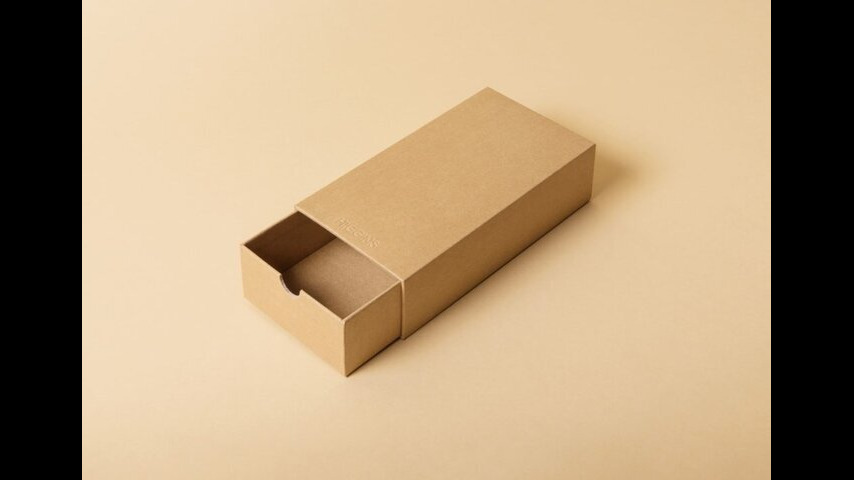In the realm of packaging, rigid boxes have emerged as a premium choice, distinguishing themselves through their robust construction and sophisticated appearance. These boxes are more than just a container; they are a vital part of the product’s presentation and protection. This guide explores the multifaceted world of rigid boxes, detailing their benefits, various applications, current trends, and considerations for choosing the ideal box for your needs.
What are Rigid Boxes?
Rigid boxes are typically constructed from high-density chipboard, a type of thick paperboard made from recycled paper fibers. The process involves wrapping this board with various outer materials, including decorative papers, fabrics, or laminates. The resulting box is rigid, with a solid structure that maintains its shape and integrity. Unlike folding cartons, which are flexible and can be folded flat, rigid boxes are pre-assembled and provide a more premium feel.
Materials Used in Rigid Box Manufacturing
The choice of material is crucial in the manufacturing of rigid boxes. Chipboard is commonly used due to its strength and ability to hold various finishes. The outer layers can be customized with different materials, such as embossed or foil-stamped papers, fabric wraps, or even glossy or matte laminates. These finishes not only enhance the visual appeal but also add to the tactile experience of the box.
Benefits of Rigid Boxes
Rigid boxes offer several advantages that make them a preferred choice for packaging various products. Their durability, aesthetic appeal, and customization options contribute significantly to their popularity.
Durability and Protection
The primary benefit of rigid boxes is their exceptional durability. The thick paperboard construction provides excellent protection against impacts, pressure, and environmental factors. This is particularly important for high-value or delicate items that need to be preserved in perfect condition during transit.
Aesthetic Appeal
Rigid boxes are synonymous with luxury and sophistication. They can be customized with high-end finishes such as foil stamping, embossing, and UV coating, which enhance their visual appeal and create a memorable unboxing experience.
Customization Options
One of the standout features of rigid boxes is their high degree of customization. Brands can choose from a wide range of sizes, shapes, colors, and finishes to create packaging that aligns with their branding and product requirements.
Eco-Friendliness
As environmental concerns grow, many manufacturers are adopting sustainable practices in the production of rigid boxes. This includes using recycled paperboard, eco-friendly inks, and reducing waste in the manufacturing process.
Applications of Rigid Boxes
Rigid boxes are used across various industries due to their versatility and premium feel. Their applications span luxury retail, electronics, gifts, and e-commerce, each benefiting from the unique attributes of rigid packaging.
Luxury Product Packaging
For luxury items such as jewelry, watches, and high-end cosmetics, rigid boxes offer a superior packaging solution. The high-quality construction and elegant design enhance the perceived value of the product and create an impressive unboxing experience.
Electronics Packaging
In the electronics sector, rigid boxes are used to package smartphones, tablets, and other high-tech devices. The sturdy construction ensures that delicate electronic components are protected from physical damage during shipping and handling.
Retail and Gift Packaging
Rigid boxes are popular in retail for items like perfumes, chocolates, and fashion accessories. Their attractive design and robust structure make them ideal for both display and gifting purposes.
E-commerce and Subscription Boxes
The growth of e-commerce has increased the demand for high-quality packaging solutions. Rigid boxes are increasingly used for subscription boxes, where the unboxing experience is an integral part of the customer journey.
Trends in Rigid Box Design
The packaging industry is constantly evolving, and rigid boxes are at the forefront of new trends and innovations. Understanding these trends can help brands stay competitive and meet consumer expectations.
Sustainable Packaging Solutions
Sustainability is a major trend in packaging design. Rigid box manufacturers are adopting eco-friendly practices, such as using recycled materials and minimizing waste. Sustainable packaging solutions not only help reduce environmental impact but also appeal to consumers who are increasingly prioritizing eco-friendly products.
Innovative Designs and Finishes
Design innovation is driving the evolution of rigid boxes. Brands are exploring new finishes and embellishments, such as holographic foils, interactive elements, and unique structural designs. These innovations help create packaging that captures consumer attention and enhances the overall product experience.
Technology Integration in Packaging
Technology is making its way into packaging design, with features such as QR codes and augmented reality (AR) being integrated into rigid boxes. These technologies can provide additional information, enhance customer engagement, and offer interactive experiences that differentiate a product in the market.
How to Choose the Right Rigid Box
Selecting the right rigid box involves evaluating several factors to ensure it meets the specific needs of the product and brand.
Factors to Consider
When choosing a rigid box, consider the size, weight, and fragility of the product. The box should be designed to provide adequate protection while also aligning with the product’s presentation requirements. Think about the box’s structural integrity, how it will be handled, and whether it needs any special features or inserts.
Customization Options
Explore the various customization options available for rigid boxes. This includes selecting the right size and shape, choosing colors and finishes, and incorporating branding elements such as logos and graphics. Customization allows for a unique and tailored packaging solution that enhances the product’s appeal and reinforces brand identity.
Cost Considerations
While rigid boxes offer premium features, they can be more expensive compared to other packaging options. It’s important to balance the benefits of using rigid boxes with the cost implications. Consider your budget and how the investment in high-quality packaging aligns with your overall brand strategy and product value.
Conclusion
Rigid boxes represent a sophisticated and versatile packaging solution that offers durability, aesthetic appeal, and customization. Their application across various industries highlights their importance in enhancing product presentation and protection. As trends and technologies evolve, rigid boxes will continue to be a key player in the packaging industry, providing brands with innovative ways to engage consumers and showcase their products.

